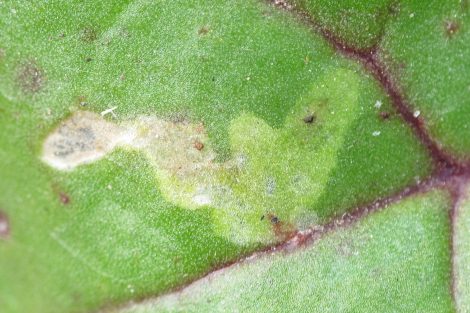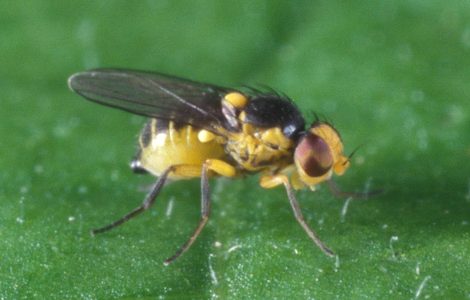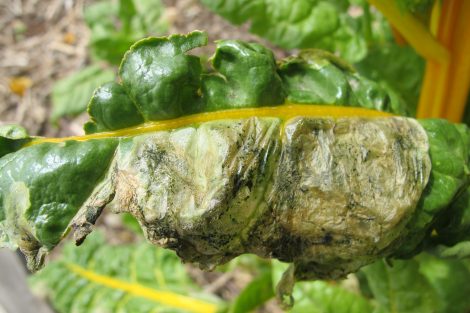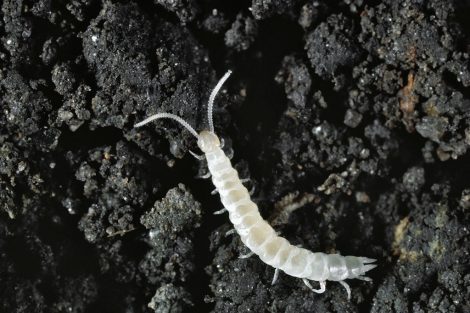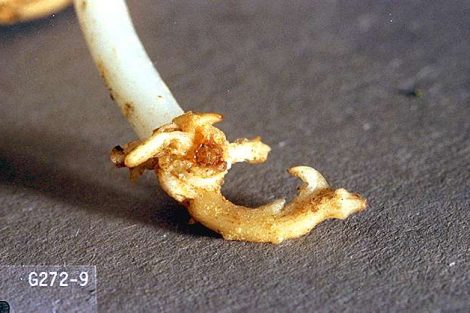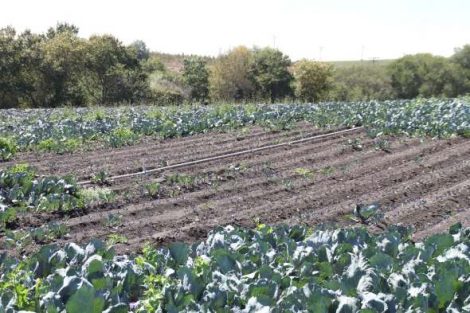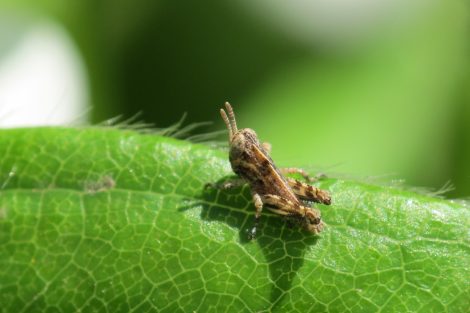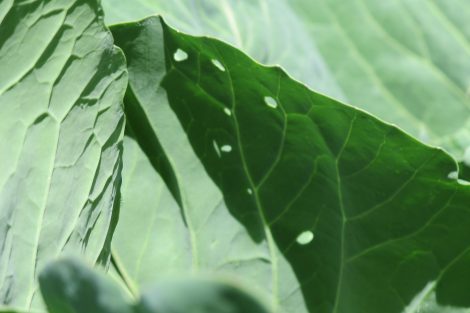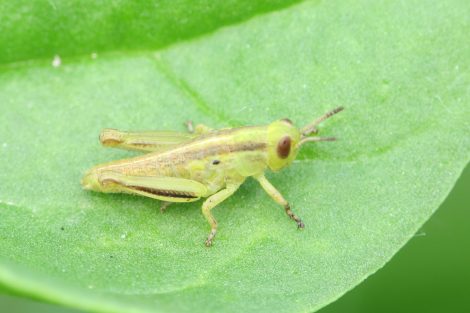In this Issue:
- Leafminer damage on Swiss chard: what to look out for
- Garden Symphylans: causing trouble below the soil surface
- Young Grasshoppers: stop them with bait
Leafminers (Diptera: Agromyzidae)
Overview
Throughout northern Utah, various instances of leafminer damage are being seen in Swiss chard and related species. There are variety of leafminer species that can cause this damage including the American Serpentine Leafminer (Lyrimyza trifolii), Pea Leafminer (Lyriomyza langei), Spinach Leafminer (Pegomya hyoscyami), and Vegetable Leafminer (Lyriomyza sativae). Other potential host crops include beans, beets, carrots, celery, cucumber, eggplants, lettuce, melon, onions, pea, peppers, potato, spinach, squash, and tomatoes.
Leafminer eggs are oblong and white, they hatch into larvae and pupate in the soil over winter. When the adult flies emerge they can range from black to grey in color. Some species have yellow markings.
Damage
Larvae hatch on host leaves and begin feeding. They then tunnel between the lower and upper leaf surfaces which causes white-colored blisters on the foliage.
Management
You should be out now scouting your chard for any signs of Leafminer damage. Some cultural management practices include blocking flies with row covers (best done earlier in the season), implementing crop rotation, and tilling the soil at the end of the growing season.
Insecticide applications can help prevent the adult flies from laying their eggs. But, the insecticides will not kill the larvae that are already feeding within the foliage. If insecticide use is necessary, it’s best to treat on the eggs that are beginning to hatch.
Click here to view table for insecticide sprays available for home use (see leafminer column)
Click here to view table for insecticide sprays available for commercial use (see leafminer column)
Additional Resources
Leafminers of Vegetable Crops (USU Fact Sheet)
Leafminers in Swiss Chard: Identify & Control Them Organically
Swiss Chard Leafminer (Pacific Northwest Pest Management Handbook)
Garden Symphylans (Scutigerella immaculate)
Overview
Garden Symphylans (sometimes called garden centipedes) are not insects, rather belong to their own arthropod class: Symphyla. They have been reported damaging young transplants and starts. Host crops include a wide variety of vegetables including brassicas, beets, leafy greens, squashes, and carrots. Symphylans generally have 1-2 generations per year. Once the eggs hatch, the nymphs will molt seven times before reaching the adult stage. Adults are “centipede-like” and have white antennae with 15 body segments with 10-12 pairs of legs. All life stages occur within the upper few inches of the soil.
Damage
Damage is caused by both the nymph and adult stage. They feed on the roots of younger plants and eventually cause corky tissue to form around the wound sites. Ultimately this leads to a reduction in stands, general stunting, and leaves the plants susceptible to soil-borne pathogens.
Management
Monitoring is necessary throughout the whole season, especially if your site has clay soil high in organic matter. Some cultural management techniques include tilling at the end of the season and transplanting healthier plants instead of direct seeding. The threshold for treatment is generally 5-10 symphylans are found per shovelful in the home garden or 2-3 in commercial production. It should be noted that this arthropod is difficult to suppress with many chemical insecticides.
Additional Resources
Biology and Control of the Garden Symphylan (Pacific Northwest Pest Management Handbook)
Garden Symphylan as a Pest of Field Crops (PennState Extension)
Young Grasshoppers (Orthopter: Acrididae)
Overview
It is the time of year where young grasshopper nymphs will be out among all of our vegetable crops. The various species found in Utah include the Differential Grasshopper (Melanoplus differentialis), Migratory Grasshopper (Melanoplus sanguinipes), Redlegged Grasshopper (Melanoplus femurrubrum), and the Twostriped Grasshopper (Melanoplus bivittatus). All grasshoppers generally have a robust body shape with large femurs on their hind legs, which allow them to jump great distances.
Damage
Both adults and nymphs have chewing mouthparts which they use to feed on the foliage of host plants leaving ragged holes.
Management
In Utah, the time for concern is during the early summer after rangeland weeds dry up and will continue throughout the season. Eggs hatch throughout late May through early July. The populations in Utah fluctuate from year to year, so the economic damage is difficult to predict. The number of grasshoppers present in late summer is a good indicator of population levels for the next year.
One management technique is the use of Nolo BaitTM which is an EPA registered biological control for grasshoppers. The bait contains Nosema locustate spores which are uniformly applied to wheat bran. When consumed it will cause the grasshoppers to be killed.
Click here to read more about Nolo Bait application.
The burned down facility that produced Nolo BaitTM has relocated and is currently taking orders.
Additional Resources
Nolo BaitTM Product
Community-Wide Grasshopper Control (USU Fact Sheet)
Grasshoppers (USU Fact Sheet)

